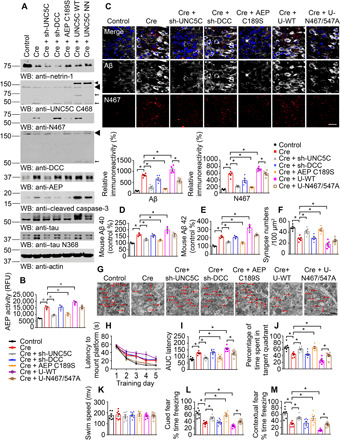Fig. 5. Blockade of UNC5C cleavage by δ-secretase reduces netrin deficiency–elicited amyloid pathologies and cognitive deficits.

Netrin-1 deprivation in the hippocampus of netrin f/f mice induced amyloid pathologies, which could be improved by decreasing the expression of UNC5C and inactivating AEP. (A) WB showed the processing of netrin-1 deprivation by injecting AAV-Cre virus into the hippocampus and UNC5C fragmentation induced by subsequent δ-secretase activation in netrin f/f mice. The hippocampal lysates were detected with various indicated antibodies. Actin, loading control. ◄, full length (transfected and endogenous UNC5C); ←, cleaved. Control: AAV-GFP; Cre: AAV-Cre; sh-UNC5C: Unc5c AAV siRNA Pooled Virus; sh-DCC: DCC AAV siRNA Pooled Virus; AEP C189S: AAV-AEP C189S; UNC5C WT: lentivirus (LV)–UNC5C; UNC5C NN: LV–UNC5C N467/547A. These viruses were injected into both sides of the hippocampus. (B) δ-Secretase activity in the hippocampus of netrin f/f mice. Data are means ± SEM; n = 3 mice per group. (C) IF signals of anti-Aβ (white) and anti-N467 (red) were detected in the hippocampus infected with various indicated viruses. The nuclei were stained with 4′,6-diamidino-2-phenylindole (DAPI). Quantification of relative immunoreactivity was shown (means ± SEM; n = 5). Scale bar, 20 μm. (D and E) Enzyme-linked immunosorbent assay (ELISA) quantification of Aβ in the brain lysates of above mice. Data were means ± SEM; n = 3. (F and G) The synaptic density in the hippocampus of above mice determined by electron microscopy (means ± SEM; n = 6). Scale bar, 1 μm. (H and I) MWM analysis as time to platform (latency, seconds) and integrated latency (AUC) for above mice (means ± SEM; n = 7). (J and K) Probe trail and swim speed of MWM test (means ± SEM; n = 7). (L and M) Fear conditioning test including cued fear conditioning test and contextual fear conditioning test (means ± SEM; n = 7). For (B) to (F) and (H) to (M), *P < 0.05 by one-way ANOVA followed by Tukey’s multiple-comparison test.
